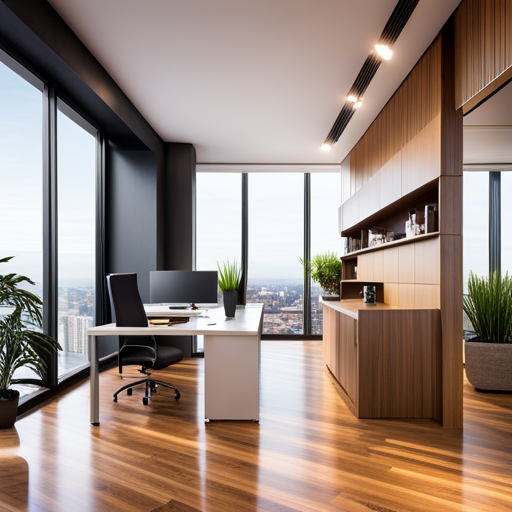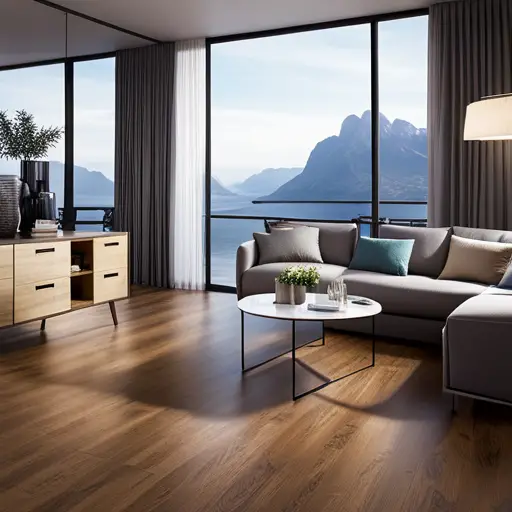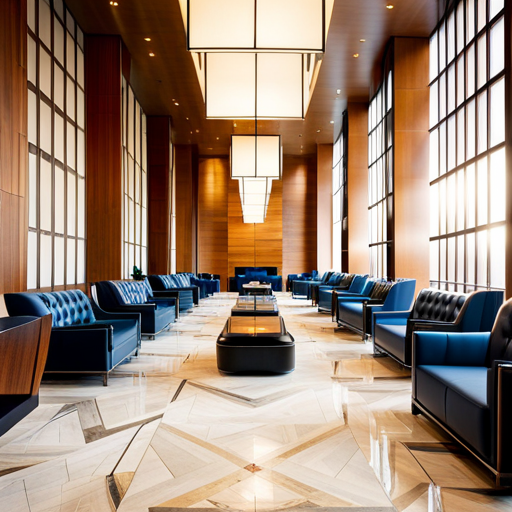How to Choose Flooring for a Beachfront Property

As the waves crash against the shore and the salty sea breeze fills the air, choosing the right flooring for a beachfront property becomes a crucial decision.
From withstanding high humidity to complementing the natural surroundings, the considerations are multifaceted.
This article provides expert insights on selecting the best flooring materials, maintaining sustainability, and managing budgets for a durable and aesthetically pleasing beachfront flooring solution.
Considerations for Beachfront Flooring
When selecting flooring for a beachfront property, it is essential to consider the unique environmental conditions and potential challenges posed by sand, saltwater, and high humidity. One key consideration is moisture resistance. Given the proximity to the ocean, the flooring material must be able to withstand exposure to moisture without warping, buckling, or developing mold and mildew.
Eco-friendly options such as bamboo and cork flooring are excellent choices for beachfront properties due to their natural resistance to moisture and sustainable sourcing. These materials not only offer moisture resistance but also contribute to a more environmentally friendly living space, aligning with the coastal environment.
In addition to moisture resistance, the flooring should also be durable enough to withstand the wear and tear from sandy feet, beach equipment, and the corrosive effects of saltwater. Engineered wood, luxury vinyl, and porcelain tile are popular choices for beachfront properties due to their ability to withstand high foot traffic and resist scratches and stains.
Proper installation and maintenance are also crucial for ensuring the longevity of the flooring in a beachfront setting.
Best Flooring Materials for Beachfront Properties
Selecting the best flooring materials for beachfront properties requires careful consideration of durability, moisture resistance, and environmental sustainability. Given the harsh coastal conditions such as saltwater exposure, high humidity, and potential storm impacts, it is crucial to opt for flooring materials that can withstand such challenges.
In this context, materials like ceramic or porcelain tiles stand out as excellent choices for beachfront properties due to their exceptional durability and resistance to moisture. These materials are not only tough but also easy to clean, making them well-suited for sandy and wet environments.
Another viable option is luxury vinyl flooring, which offers high water resistance and can mimic the look of natural materials like wood or stone.
Additionally, hardwood flooring with a high Janka hardness rating, such as Brazilian walnut or teak, can provide the desired durability for beachfront applications.
When considering flooring for a beachfront property, prioritizing durability and moisture resistance is essential to ensure longevity and minimal maintenance requirements in the face of the coastal elements.
Pros and Cons of Tile Flooring
When considering tile flooring for a beachfront property, it’s important to weigh the pros and cons.
On the positive side, tile flooring is easy to maintain and can help keep indoor spaces cool in warm climates.
However, it’s essential to also consider potential drawbacks such as the hardness of tile and the possibility of it being slippery when wet.
Easy Maintenance
Tile flooring offers both advantages and disadvantages in terms of easy maintenance for beachfront properties. When considering easy maintenance for beachfront properties, it is important to take into account the specific challenges of sand, saltwater, and high humidity. In terms of easy maintenance, tile flooring has the following pros and cons:
-
Stain resistant flooring options
-
Some types of tile, such as porcelain or glazed ceramic, offer excellent stain resistance, making them ideal for beachfront properties where sand and spills are common.
-
Grout lines, however, can be susceptible to staining, requiring regular sealing and maintenance to prevent discoloration.
-
Water resistant finishes
-
Tile flooring with water-resistant finishes provides protection against the moisture and humidity common in beachfront environments.
-
However, proper installation and sealing are crucial to ensure the longevity of the water-resistant properties.
Cool in Warm Climates
Considering the need for flooring that remains cool in warm climates, particularly in beachfront properties, it is essential to evaluate the thermal properties of tile flooring in relation to its suitability for this environment.
Tile flooring is a popular choice for its ability to keep spaces cool, offering energy-efficient cooling and reducing the reliance on air conditioning. This makes it a sustainable flooring option, as it can help lower energy consumption.
However, while tile does remain cool, it can also feel cold to the touch, which may not be ideal in the mornings or cooler seasons. Additionally, the hardness of tile can be uncomfortable to stand on for long periods.
Transitioning from tile to engineered hardwood flooring presents an opportunity to explore the benefits of a warmer, yet still durable, flooring option.
Benefits of Engineered Hardwood Flooring
Engineered hardwood flooring offers durability and aesthetic appeal, making it an ideal choice for beachfront properties. It provides numerous benefits that make it a popular option for such environments:
-
Cost Comparison:
-
Engineered hardwood flooring is often more cost-effective than traditional hardwood, providing the same luxurious look at a lower price point.
-
The installation process for engineered hardwood is typically more straightforward and can be less labor-intensive, resulting in additional cost savings compared to solid hardwood.
-
Durability and Resilience:
-
Engineered hardwood is constructed in layers, which enhances its stability and resistance to moisture and temperature fluctuations, making it particularly suitable for beachfront properties.
-
The construction of engineered hardwood allows for greater flexibility and resistance to warping and cupping, which is advantageous in coastal climates.
Transitioning into the subsequent section about ‘choosing sustainable flooring options’, it’s important to consider not only the durability and aesthetics of the flooring but also its environmental impact and sustainability.
Choosing Sustainable Flooring Options
When considering sustainable flooring options for a beachfront property, it is essential to prioritize environmental impact and long-term viability. Sustainable options such as bamboo, cork, reclaimed wood, and linoleum are environmentally friendly choices that offer durability and aesthetic appeal.
Bamboo is a rapidly renewable resource that grows to maturity in as little as five years, making it an excellent eco-friendly flooring option. Cork is another sustainable material, as it is harvested from the bark of cork oak trees, allowing the trees to continue growing and producing more cork.
Reclaimed wood, sourced from old buildings or furniture, not only reduces the need for new timber but also adds a unique character to the property. Linoleum, made from natural materials such as linseed oil, pine rosin, and wood flour, is biodegradable and offers a long lifespan.
These sustainable flooring options minimize the environmental impact by utilizing renewable resources, reducing waste, and lowering carbon emissions during production. Additionally, they contribute to the creation of healthier indoor air quality, making them ideal choices for a beachfront property where the focus is on sustainability and longevity.
Maintenance Tips for Beachfront Flooring
When it comes to maintaining flooring in a beachfront property, it’s essential to consider the impact of saltwater. To protect against corrosion and damage, it’s important to implement strategies for saltwater resistance.
Additionally, regular removal of sand and debris and the application of a suitable sealant can help prolong the lifespan of the flooring in a beachfront setting.
Saltwater Resistance Tips
To ensure the longevity of beachfront flooring, it is essential to prioritize saltwater resistance in the maintenance routine. Saltwater can significantly impact the durability and appearance of flooring due to its corrosive nature and environmental impact. Here are some crucial tips to enhance saltwater resistance and maintain beachfront flooring:
-
Choose Resilient Materials: Opt for flooring materials specifically designed to resist saltwater corrosion, such as porcelain tile or marine-grade hardwood.
-
Consider Eco-Friendly Options: Select sustainable and eco-friendly flooring materials to minimize the environmental impact of saltwater exposure.
By following these saltwater resistance tips, you can effectively mitigate the detrimental effects of saltwater on your beachfront flooring.
Now, let’s delve into the next crucial aspect of beachfront flooring maintenance: sand and debris removal.
Sand and Debris Removal
Prioritizing saltwater resistance in beachfront flooring maintenance, it is essential to address the removal of sand and debris to uphold the longevity and appearance of the flooring.
Sand removal is crucial in preventing scratches and abrasions on the flooring surface. Regular sweeping with a soft-bristle broom or vacuuming with a brush attachment can effectively eliminate sand particles.
Additionally, utilizing doormats at entry points can minimize the amount of sand and debris tracked indoors.
Debris management is equally vital, as larger particles can cause dents or damage to the flooring. Implementing a no-shoes policy indoors can significantly reduce the amount of debris brought in from the beach.
Furthermore, prompt removal of any spills or organic matter can prevent staining and deterioration of the flooring.
These maintenance practices are integral in preserving the allure and functionality of beachfront flooring.
Sealant for Protection
Regularly applying a high-quality sealant is essential for protecting beachfront flooring from saltwater, sand, and debris. When selecting a sealant, prioritize durability and resistance to saltwater corrosion. Consider the environmental impact of the sealant, opting for eco-friendly options to minimize harm to the surrounding beach ecosystem.
When applying the sealant, ensure thorough surface preparation to promote adhesion and longevity. Proper application technique is crucial; follow manufacturer guidelines for the number of coats and drying times. Additionally, periodic reapplication of the sealant is necessary to maintain optimal protection against the harsh beachfront elements.
By diligently maintaining the sealant, the flooring will be better equipped to withstand the challenges posed by its coastal environment. This proactive approach will extend the lifespan of the flooring and reduce long-term maintenance costs.
Now, let’s transition into the subsequent section about ‘budget-friendly flooring solutions’.
Budget-Friendly Flooring Solutions
One economical approach to flooring for beachfront properties involves seeking out cost-effective materials that can withstand the unique challenges of coastal environments.
When considering budget-friendly flooring solutions for a beachfront property, it’s important to prioritize eco-friendly options that offer moisture resistance.
One such option is laminate flooring, which can mimic the look of hardwood or stone at a more affordable price point. Laminate flooring is durable and resistant to moisture, making it a practical choice for coastal homes.
Another cost-effective solution is vinyl flooring, which is available in a wide range of styles and can effectively replicate the look of natural materials. Vinyl is also highly resistant to water and easy to maintain, making it suitable for beachfront properties.
Additionally, engineered wood flooring provides a more affordable alternative to solid hardwood while offering enhanced resistance to moisture and humidity.
Frequently Asked Questions
Are There Any Specific Flooring Options That Are Best for Withstanding Saltwater and Sand in a Beachfront Property?
When considering best flooring options for beachfront properties, it’s crucial to prioritize materials resistant to saltwater and sand. Opt for durable choices like porcelain tile, luxury vinyl, or concrete. Regular cleaning and sealing are essential maintenance tips for beachfront flooring.
How Can I Prevent My Beachfront Flooring From Being Damaged by Saltwater and UV Rays?
Preventive measures are vital to safeguard beachfront flooring from saltwater and UV rays. Protective coatings, like epoxy or polyurethane, provide a resilient barrier against environmental elements. Regular maintenance and sealant reapplication further fortify the flooring’s longevity.
Are There Any Flooring Materials That Are More Resistant to Humidity and Moisture in a Beachfront Environment?
When considering flooring for a beachfront property, it’s important to prioritize materials resistant to humidity and moisture. Selecting options like ceramic tile, luxury vinyl, or porcelain can help mitigate damage. Implementing regular maintenance and sealing will further protect the flooring.
What Are the Best Ways to Maintain and Clean Beachfront Flooring to Prevent Damage From Sand and Saltwater?
Maintaining durability of beachfront flooring requires regular cleaning to prevent sand and saltwater damage. Implementing cleaning techniques like sweeping, mopping with a damp cloth, and using mild detergents can help preserve the quality and longevity of the flooring.
Are There Any Eco-Friendly Flooring Options That Are Well-Suited for Beachfront Properties?
When considering eco-friendly options for beachfront properties, durability and aesthetics are crucial. One interesting statistic is that sustainable bamboo flooring is 30% harder than oak, offering both resilience and environmental benefits for coastal environments.
Conclusion
In conclusion, choosing the right flooring for a beachfront property requires careful consideration of factors such as durability, sustainability, and maintenance.
While tile flooring offers water resistance and easy maintenance, engineered hardwood provides a natural, elegant look.
It’s important to select sustainable materials to minimize environmental impact.
Regular maintenance is essential to preserve the quality of beachfront flooring.
Overall, the right flooring choice can enhance the beauty and functionality of a beachfront property.

Rubin Everest, a seasoned expert in the world of flooring, brings a wealth of knowledge and passion to the surface. As the mind behind ebbow.com, Rubin is dedicated to sharing insights on the latest trends, innovative solutions, and expert advice in the realm of flooring. Whether you’re seeking practical tips for installation or design inspiration, Rubin Everest is your go-to source for all things flooring-related, making your journey to the perfect floor an informed and enjoyable experience.





